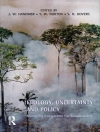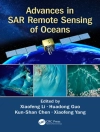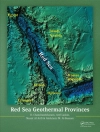This book focuses on a range of geospatial applications for environmental health research, including environmental justice issues, environmental health disparities, air and water contamination, and infectious diseases. Environmental health research is at an exciting point in its use of geotechnologies, and many researchers are working on innovative approaches. This book is a timely scholarly contribution in updating the key concepts and applications of using GIS and other geospatial methods for environmental health research. Each chapter contains original research which utilizes a geotechnical tool (Geographic Information Systems (GIS), remote sensing, GPS, etc.) to address an environmental health problem. The book is divided into three sections organized around the following themes: issues in GIS and environmental health research; using GIS to assess environmental health impacts; and geospatial methods for environmental health. Representing diverse case studies and geospatial methods, the book is likely to be of interest to researchers, practitioners and students across the geographic and environmental health sciences. The authors are leading researchers and practitioners in the field of GIS and environmental health.
Jadual kandungan
Foreword.- Section I – General Considerations in Geospatial Analysis of Environmental Health.- 1.Environmental Health and Geospatial Analysis: An Overview.- 2. Using Geo Visualization and Geospatial Analysis to Explore Respiratory Disease and Environmental Health Justice in New York City.- 3. Outdoor Air Pollution and Health – A review of the Contributions of Geotechnologies to Exposure Assessment.- 4. The Use of Residential History in Environmental Health Studies.- 5. Proximity Analysis Methods for Exposure Assessment in Environmental Health Justice Research.- Section II – Impacts on Environmental Health (Topical Case Studies).- 7. Geospatial analysis of West Nile virus (WNV) incidences in an urban environment: A Case Study in the Twin Cities Metropolitan Area of Minnesota.- 8. The Health Impacts of Brownfields in Charlotte NC: A Spatial Approach.- 9. Regional Environmental Patterns of Diarrheal Disease in Bangladesh: A Spatial Analytical and Multilevel Approach.- 10. Developing a Supermarket Need Index for New York City.- 11. Asthma, Air Quality, and Environmental Justice in Louisville, Kentucky.- 12. The Impact of Changes in Municipal Solid Waste Disposal Laws on Proximity to Environmental Hazards: A Case Study of Connecticut.- 13.Global Geographies of Environmental Injustice and Health: A Case Study of Illegal Hazardous Waste Dumping in Cote d’Ivoire.- 14. Environmental and Health Inequalities of Women in Different Neighbourhoods of Metropolitan Lagos, Nigeria.- 15. Housing Quality and Racial Disparities in Low Birth Weight: A GIS Assessment in Flint, Michigan.- Section III – Geospatial Methods in Investigating Environmental Health.- 16. Participatory mapping as a component of operational malaria vector control in Tanzania.- 17. Revisiting Tobler’s First Law of Geography: Spatial Regression Models for Assessing Environmental Justice and Health Risk Disparities.- 18. A Spatially Explicit Environmental Health Surveillance Framework for Tick-Borne Diseases.- 19. Using Distance Decay Techniques and Household-Level Data to Explore Regional Variation in Environmental Inequality.- 20. Merging Satellite Measurement with Ground-based Air Quality Monitoring Data to Assess Health Effects of Fine Particulate Matter Pollution.- 21. Poverty Determinants of Acute Respiratory Infections in the Mapuche Population of Ninth Region of Araucania, Chile (2000-2005). A Bayesian Approach with Time-space Modelling.- 22. GIS and Atmospheric Diffusion Modeling for Assessment of Individual Exposure to Dioxins Emitted from a Municipal Solid Waste Incinerator.- 23. Synthesizing waterborne infection prevalence for comparative analysis of cluster detection methods.- 24. Spatiotemporal Analysis of PM2.5 Exposure in Taipei (Taiwan) by integrating PM10 and TSP observations.- Index.












